Most people are capable of producing great things in their imagination—interesting characters, terrifying creatures, breath-taking locations, and captivating scenes. But bringing these creations into reality always required skill, skill required practice, and practice required time and effort. Most people can’t afford that, so they had to accept the fact that they will never see the products of their imagination in reality (unless they would pay someone for that!).
That was true, until now. The AI art generators like Midjourney, DALLE-2, and Stable Diffusion have allowed non-artists to describe their creation to a computer program, and then see an approximation of what they imagined right there, on screen—in high quality, with sharp details and vibrant colors. But if it’s so great, then why are artists so upset about it? Are they just salty that fewer people will need their services? Maybe, but this issue is far more nuanced than that.
Let’s go over a few arguments that I keep hearing from the AI enthusiasts, and I’ll show you what they look like from an artistic perspective. All the quotes I’ll be using are made up to summarize the specific views.
There’s No Difference Between AI Art and Human Art
“If it looks like art, then why does it matter how it was created? If in an art contest the jury can’t tell the difference between artworks submitted by humans and by AI, then isn’t that a confirmation that AI is just as capable as a human in terms of creating art?”
Let’s do an experiment. Here’s an image—what do you think about it?
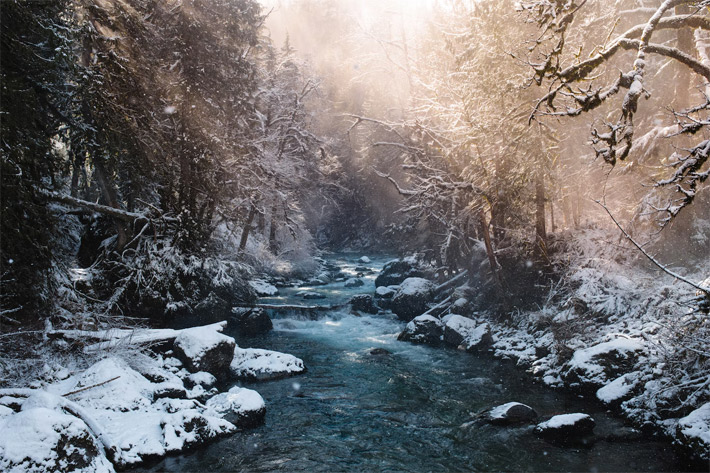
This image can make you feel certain emotions, you can also admire the skill of the photographer who captured and edited this composition. But what if I told you it’s not a photo? What if I told you it’s actually a photo-realistic painting?

Now you can experience a whole new set of emotions. You might have admired the skills of a photographer, but taking a good quality photo and editing it is still easier than creating a photo-realistic artwork. So many things can go wrong, so many mistakes that can break the illusion—and the artist managed to avoid them all! When you’re aware of this, the same image can seem much more amazing to you.
But let me tell you something even more shocking: the artist who painted it has lost her arms in an accident, and she paints… with her feet! So what do you think about this artwork now?

I can go on and on, but you get the point—the look of the artwork, what we actually see, is only a part of its artistic impact. When we’re looking at a pretty image, we can admire its beauty, the colors, the composition—but we can also admire the choices of the artist, their creativity and skill. We know there’s an infinite number of ways to make an artwork look bad, so it’s almost unbelievable when an artist manages to avoid most of them.
AI art doesn’t have any of that. Yes, it’s quite amazing what these programs can do, how they can learn to understand concepts and then use that knowledge to produce something new and beautiful. But it can’t be compared to human skills. A human who can run 40km/h is more impressive than a car that reaches a speed over 200km/h—because humans have to work within the limitations that machines are not restricted by.
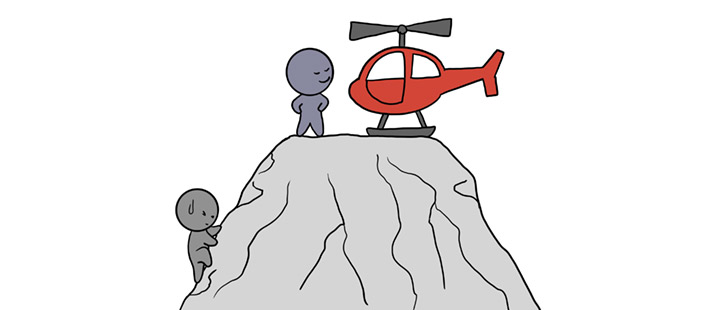
Yes, I am aware that a lot of “prompt engineers” take a lot of time to tinker with the settings and new iterations to finally get the image they envisioned. The concept itself can also be pretty amazing. But the end result is more like a photo than a drawing/painting/3D sculpture. Why? Because the beauty of all the subjects in your image wasn’t created by you, just like the sunset is not created by the photographer. In the end, I believe AI art should have its own category, just like photography is separated from “manual art”—so that people can admire it without feeling cheated.
It’s Not Stealing, Humans Also Learn From Each Other!
“AI doesn’t copy parts of someone’s art to create its own art. It simply learns from artists, and then it creates something new from that knowledge—just like artists do. If I can go to a museum and use all these artworks as an inspiration to create my art, then how is that different from AI doing the same?”
A lot of artists feel uncomfortable with the thought that AI used their art to learn. But why? Isn’t it the same as what humans do? Not exactly.
First, learning from other humans without their explicit consent is actually unavoidable. Even if we agreed it’s bad, it’s just physically impossible to regulate it, so we have to tolerate it. This isn’t true for AI—AI has to be explicitly told what to learn from. Limiting its training to a specific set of copyright-free artworks is not a problem at all.
Second, there’s a problem with scale. I’m going to be blunt here, but this seems to be an accurate comparison—allowing birds to defecate on your lawn doesn’t mean you consent to anyone dumping their feces there. Yes, it’s technically the same thing, but the consequences are different, and that affects your consent. Similarly, consenting to other artists learning from you doesn’t have nearly the same consequences as allowing AI to do the same. So the consent to the former shouldn’t imply the consent to the latter.

Third, humans are limited. Our time is limited, our strength is limited. No artist is capable of learning from all the others to do the same as they do, and forever produce better art faster than all of them combined. Even the best artist ever will die one day, leaving space for new ones. So allowing another artist to learn from me is not that risky, all things considered. Can the same be said about AI?
Fourth, it’s actually pretty absurd to claim that if it’s ok for a human to do something, then there’s nothing wrong with a machine doing the same thing. If a machine killed a human in self defense, there would be an outrage—and yet it’s ok for a human to do so. Putting it simply, humans have rights, machines don’t, and ignoring this fact is actually pretty offensive to humans.

It’s Not Copyright Violation, Because the Artworks Are not Actually Copied
“You only think that it’s stealing, because you don’t really know how AI art generators work. The artworks are not really copied (otherwise the AI database would have to be much, much larger, and it’s not!). AI simply trains on them and then leaves them alone.”
It’s not common knowledge, but you don’t actually have to physically copy a part of a drawing to infringe on someone’s rights. Even if all the lines you’ve drawn are yours, if the composition made out of them bears a substantial similarity to someone else’s creation, this is considered a copyright violation. In normal circumstances, it’s very hard to prove that similarity—but good luck with defending your case when you used the very name of the artist in the prompt!
You may not find it reasonable, but think about it: what if you have a distinctive style that people can recognize you by, and then someone copies your style to create a political artwork? And then people start to think you take that political stance yourself? This can be actually damaging to you and your career. That’s why the way of expressing an idea (and not just the exact placement of the pixels in a specific artwork) must be protected under the law.
Let’s also take a look at what AI actually does when it “trains” (at least, how I understand it). This is a very simplified explanation, but it should give you a decent idea about how the original artworks are used.
When AI is trained, it learns how to turn real images into a special noise map, and then how to turn that noise map back into the image. Once it learns it, it doesn’t need the original anymore—it can simply save the noise map, along with a label describing it (hence the small database).
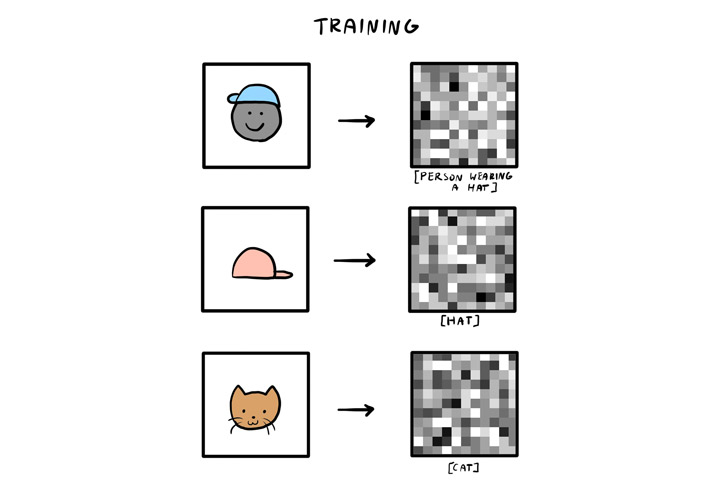
Then, when a new image is to be generated, AI uses the words from the prompt to bring back the noise maps labeled with them. Then it just needs to generate a noise map that will be similar to a noise map of, in this example, “person wearing a hat“, “hat“, and “cat“. This new noise map can then be “de-noised”, until a clear image appears.

So even though the original images are not used in the generation stage, they are very much used in the training stage. It’s important to note that AI doesn’t just look at them and goes away—it actively uses them to generate something. Even though that “something” is not a direct copy, it’s still something that couldn’t be created without the original artwork.
According to the copyright law in the US, it is legal to use someone’s artwork to create a derivative work. However, the derivative work must contain a substantial amount of new material, which basically means that if you subtracted the original from it, you’d still have plenty left. This isn’t true in the case of a noise map, which means it’s not a copyrightable derivative work—it’s actually a copy, just in a form unrecognizable to a human brain.

It’s not Stealing, Because These Images Are Freely Available
“When uploading your art to the Internet, you give everyone a chance to do anything they want with it. If you don’t want it to be used, just don’t post it”.
I’m not going to spend much time on this one, because I think it’s pretty ridiculous. Just because you have an access to something, doesn’t mean you’re allowed to do whatever you want with it. You can’t just get into someone’s car without a permission, even if it was parked near you and not locked.
When artists upload their images to online galleries like Instagram or DeviantArt, they give those sites a license to display these images. This license can include other rights as well, but the important thing is that it only applies to the website, not all the viewers that happen to visit it. If Disney allows Instagram to display its drawing of Elsa, it doesn’t mean that now everyone can download that drawing and use it for whatever, and Disney can’t do anything about it.
AI is a Tool, Not a Replacement
“When digital art was starting to become a thing, traditional artists also rebelled against it. They thought it was cheating, that it wasn’t real art… But those who grasped this new opportunity, today successfully monetize their artistic skills in many fields. AI is just another tool in an artistic repertoire, we just need to evolve to adjust to it!”
A lot of artists use AI as inspiration, or as a preliminary sketch that can later be skillfully adjusted to their style. AI can also quickly generate multiple scenes based on the client’s description, so it can help with artist-client communication during commissions. So AI can be quite useful for art, but there’s one problem with that.
At the moment of writing this article, the AI art generators are still imperfect, and it’s pretty easy to tell AI art from human art. However, AI can develop very quickly, so in a few years this may no longer be true. AI will be faster, more customizable, more efficient. It will not only mix the existing styles, but also create new, amazing ones, before any human can even think of them. And even if you manage to create a new style, AI will only need to see a couple of your artworks to produce an infinite number of “your” artworks, effectively out-competing you from the get-go.
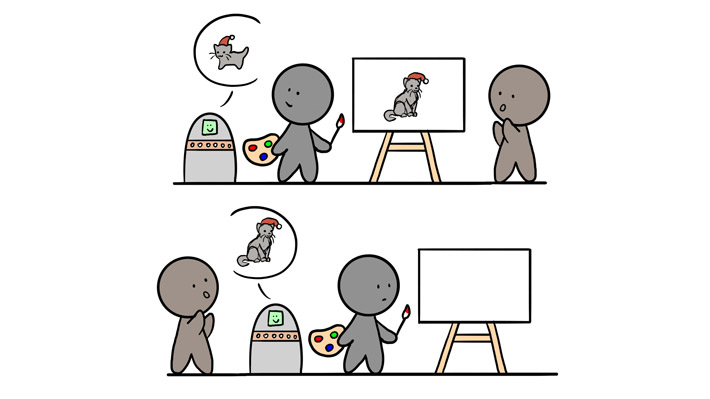
So what will be left for you to do? Creating imaginative prompts? This is something that AI can also learn to do, training on human prompts just like it trained on human art. Best case scenario, artists will be relegated to translating the wishes of the client into the language AI can understand. Worst case scenario, the future AI will be so good at understanding the expectations of the client, that we will not be needed even for that.
I also want you to consider one thing: in the art commission process, the client provides the description, and the artist provides the artwork. No matter how creative and detailed that description is, the client is still not the artist. Even telling the artist what to change and making other suggestions like that doesn’t make them an artist (just an art director at best). Now think about it: when you type a prompt into your AI art generator, who’s the client, and who’s the artist?
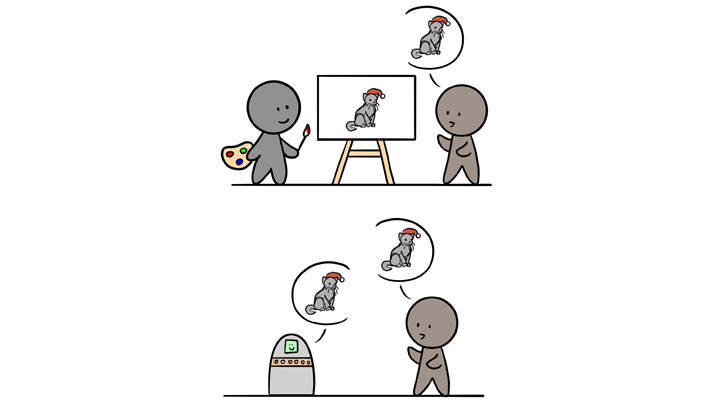
It’s a Normal Progress, Just Like a Combine Harvester
“Technology keeps improving, that’s normal. The washing machine replaced the labor of washing your clothes in a river, and the combine harvester replaced the labor of dozens of farm workers. Should we stop producing washing machines and combine harvesters? If not, then why do you want to stop the progress of AI?”
When doing something, sometimes you care about the goal, sometimes about the process, and sometimes about both. When you care about the goal only, optimizing the process to make it shorter and cheaper is very welcome. But when you care about the process, such an optimization wouldn’t actually be called progress.
Do we need a vehicle that can bring people safely and comfortably to the top of Mount Everest? Do we need a machine that plays a video game for you, so that you can see the end credits as soon as possible? Do we need robots that can play sports very fast, so that you can see the end score within minutes? Do we need AI that watches the movie and summarizes it for you, so that you don’t have to watch it?
Creating art is one of these satisfying activities that humans like to do regardless of (or beside) the end result. It’s not some kind of back-breaking labor that we’d be gladly relieved from, so why would we need a tool that does exactly that? If that’s progress, then is it progress towards what? A future where humans no longer have to create anything, and can finally spend all their time consuming AI content? It sounds pretty dystopian, to be honest.

There’s also another side to this. Normally, if you needed art and weren’t able to create it yourself, you had to pay others for that. No longer having to do that can count as progress from your perspective. And yes, I can definitely imagine a utopian future where humans no longer have to provide anything to each other, because everything is provided by machines—so humans do things for fun only.
But that’s exactly it—it’s a utopia, and it’s naive to think that a blind “progress” will get us there. If a change has a potential to disrupt the whole society, we should make sure it will have a net positive effect before we implement it—instead of diving into it headfirst, just because it seems to be beneficial for some people. It’s not like “a machine replacing humans” must automatically count as progress—it’s more nuanced than that.
Artists Can Still Create Art the “Old Way”
“Ok, but not having to create art doesn’t mean we can’t do it for fun, right? Horses are no longer needed for locomotion, but people still ride horses for fun. That’s just how it is, certain professions are replaced with machines, but you can still do those activities—just not for money”
This is certainly a possibility, but there’s one thing I worry about. Creating art has a social aspect to it—sharing the product of your imagination with others feels amazing, and it complements the fun of creation. This isn’t only about ego—imagining what the artwork will look like for other people, what it will make them feel, adds an extra dimension to the process of creation.
What if this aspect is no longer there? What if instead of searching for artists that you can follow on Instagram, you can just let the algorithm produce the exact type of art you want to see 24/7, with a truly infinite scroll? How many people will take the extra step to search for “genuine” art that’s posted less frequently, with less predictable quality? A lot of artists already have a hard time reaching their audience—what if they are forced to compete with AI on top of that?
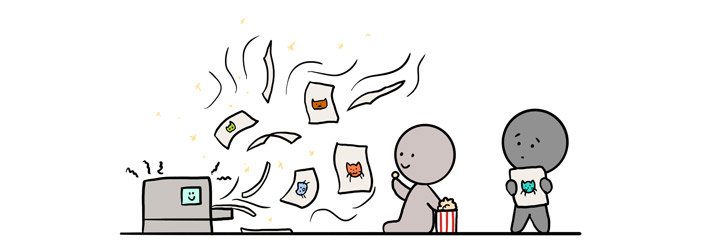
There’s also another issue. To get really good at art, you have to sacrifice plenty of time. If artistic skills can no longer be monetized, then artists will have to spend most of their day doing other jobs. They will no longer be able to become really good without becoming the walking stereotype of a starving artist. This means that even the people who enjoy human art will have a harder time finding it—at least in the same quality it exists today. I have a hard time seeing it as progress.
It’s Too Late to Stop It
“I may not like this either, but there’s not much we can do. The Pandora’s box has been opened, and it can never be closed again. We just need to adapt, it’s the only thing we can do at this point.”
I can only say to that… you wish! AI is not some kind of a sentient creature with its own free will. It doesn’t do anything unless humans tell it to. And since humans have to obey the law, all it takes to stop AI is to change the law. Of course, it will not stop anyone from using it illegally, but it will at least restrict its use.
And I’m not saying that it must be stopped, just regulated. But in order for it to be regulated, we must first express the need for such regulations. It’s not too late for that!
You’re Just a Bunch of Luddites!
“In the 19th century there were groups of textile workers (called the Luddites) that protested against the machinery that were going to replace them. They went as far as to physically attack the machines. You do exactly the same today—you’re willing to destroy a very promising technology just because you’re afraid to lose your job!“
If AI gave you the power to finally do something you’ve dreamed about, it’s very likely you’ll not want it to go away. This gives you a bias. Don’t get me wrong, we’re all biased, but please consider this for a moment. Imagine a similar, but opposite situation—this time you don’t like the new technology. Would all these arguments actually make you change your mind? Let’s see!
Let’s say a new machine has been invented that can clone a human and grow the new embryo into an adult within months, while also retaining the skills of the original. Everyone who’s very good at their job can now be cloned into multiple copies, so now all the jobs can be taken before your own child gets to adulthood. Sounds scary? But hear me out…

Your DNA hasn’t been stolen, because you have been simply leaving the samples everyone around you, free for everyone to take and do with as they will. And humans are allowed to produce new humans, so why can’t a machine do the same? Treat that machine as a tool, not as a replacement. You need to adapt and switch to machine maintenance jobs (at east until the machines learn to do it on their own). That’s simply progress, do you want to stop progress just because you want to keep your job? You Luddite!
So, are these arguments compelling? If not, then it should be clear that it’s possible to be against a new technology for good reasons. You wouldn’t like your genuine concerns to be brushed off as “just being afraid to lose your job”, so why would you treat artists like this?
Conclusion
If you’re an AI art enthusiast, I hope this article opened your eyes to certain risks involved with this whole issue. Some of the artists who call you out for using AI can indeed be petty gatekeepers, but some of them make very good points—you just need to be willing to listen to them. In the end, you should also be interested in regulating AI art—otherwise you may find yourself in a situation where you can faithfully bring your ideas to life, but nobody cares about them anymore.
And if you’re an artist, I know this may sound really depressing, but remember that most of it is just speculation. The technology is relatively new, so it’s basically the Wild West out there—everyone experiments with AI, trying to profit from it before any regulations are created. AI is here to stay, but with a little bit of good will from the companies, it will coexist with the artists instead of replacing them. All we need is some regulation—so don’t be afraid to speak up and let the companies know what needs to be changed!

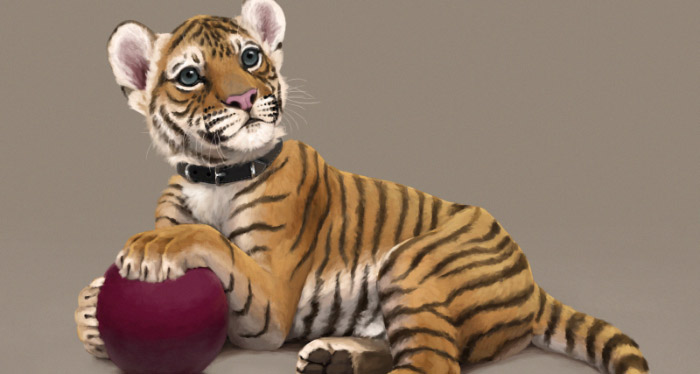
11 Comments